Statements and messages of the Prime Minister of RA
“The Velvet Revolution’s values are all-Armenian values: following the Pan-Armenian revolution, the long-standing fragmentation that prevailed in our reality for many years should be substituted with all-Armenian unity” - PM delivers speech at Renaissance Square in Stepanakert
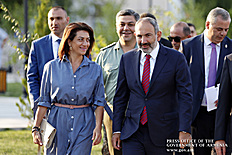 1670x1113px - 572 Kb
1670x1113px - 572 Kb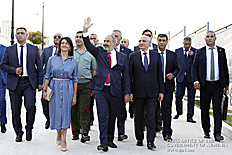 1670x1113px - 507 Kb
1670x1113px - 507 Kb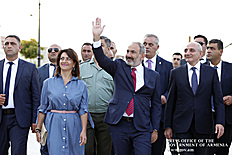 1670x1113px - 462 Kb
1670x1113px - 462 Kb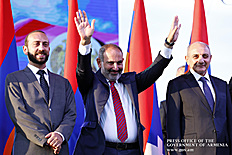 1670x1113px - 544 Kb
1670x1113px - 544 Kb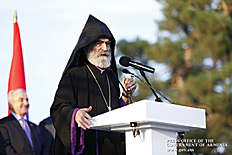 1670x1113px - 330 Kb
1670x1113px - 330 Kb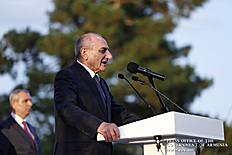 1670x1113px - 310 Kb
1670x1113px - 310 Kb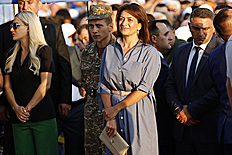 1113x1670px - 458 Kb
1113x1670px - 458 Kb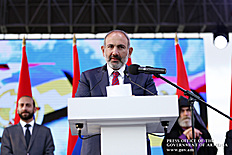 1670x1113px - 418 Kb
1670x1113px - 418 Kb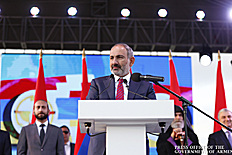 1670x1113px - 395 Kb
1670x1113px - 395 Kb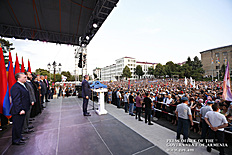 1670x1113px - 679 Kb
1670x1113px - 679 Kb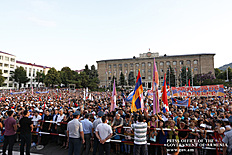 1670x1113px - 740 Kb
1670x1113px - 740 Kb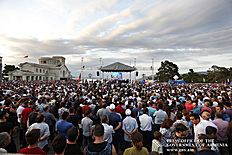 1670x1113px - 722 Kb
1670x1113px - 722 Kb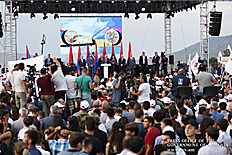 1670x1113px - 780 Kb
1670x1113px - 780 Kb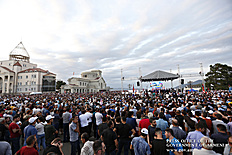 1670x1113px - 674 Kb
1670x1113px - 674 Kb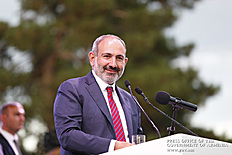 1670x1113px - 428 Kb
1670x1113px - 428 Kb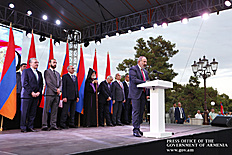 1670x1113px - 572 Kb
1670x1113px - 572 Kb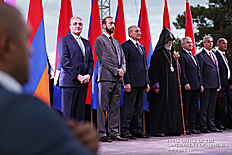 1670x1113px - 520 Kb
1670x1113px - 520 Kb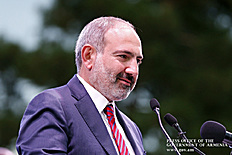 1670x1113px - 643 Kb
1670x1113px - 643 Kb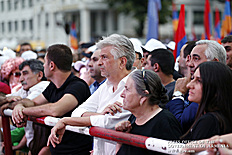 1670x1113px - 530 Kb
1670x1113px - 530 Kb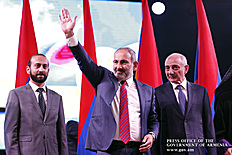 1670x1113px - 560 Kb
1670x1113px - 560 Kb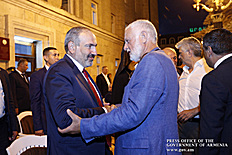 1670x1113px - 745 Kb
1670x1113px - 745 Kb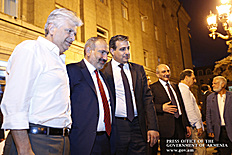 1670x1113px - 609 Kb
1670x1113px - 609 Kb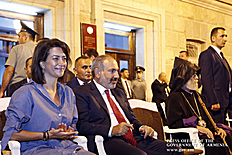 1670x1113px - 568 Kb
1670x1113px - 568 Kb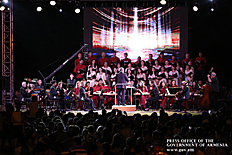 1670x1113px - 641 Kb
1670x1113px - 641 Kb
more 21 photos
Prime Minister Nikol Pashinyan is in the Republic of Artsakh on a working visit. Today Nikol Pashinyan attended a rally in Stepanakert Renaissance Square and made a speech.
Below is the full text of the Prime Minister’s remarks:
“Dear people, proud citizens of the Republic of Armenia and Artsakh, I welcome you all.
Proud Armenians from the Diaspora, I welcome you all. From Artsakh’s Central Square, I welcome all Armenians around the world; I welcome the proud Armenians of the world, and I wish to recall the slogan that used to be voiced in this square in 1988: “Reunification!”
My dear people,
I suggest commemorating the memory of our Artsakh war martyrs with a minute’s silence, as they made it possible with selfless dedication for the Prime Minister of Armenia to deliver a speech on the future of Armenia, Artsakh and the Diaspora at Renaissance Square in Stepanakert.
Let us commemorate our martyrs with a minute of silence... And to pay tribute to our martyrs, veterans, generals, officers and soldiers, I would like to proceed with my speech in an unusual way by reading out a poem that I wrote in 2016 as a volunteer at the Defense Army’s military position in Martakert region. Entitled “Armenian Troops in the Plain,” the poem comes to demonstrate that the fight for liberation of Artsakh became a turning point in our lives.
Honorable President of the Republic of Artsakh,
Honorable President of the Republic of Armenia,
Esteemed RA National Assembly Speaker,
Dear members of the National Assemblies of the Republic of Armenia and the Republic of Artsakh,
Your Holiness,
Honorable Members of the Governments of the Republic of Armenia and the Republic of Artsakh,
Government officials,
Dear participants of the Pan-Armenian Games,
My dear people,
These days we have all gathered in Artsakh to open the Pan-Armenian Games. This national sporting event, however, gave us the opportunity to organize this unprecedented rally - this exceptional forum to deliver a very important message to the Armenians of the world, to address some of the important issues concerning the organization of our nation-wide life.
There has been much talk to the effect that the Velvet Revolution in Armenia established new realities in the spring of 2018. For obvious reasons, these new realities in Armenia should have direct implications in the Diaspora and Artsakh. Today, the issue of how this impact on the life of Artsakh and the Diaspora should be widely discussed. In order to find an organic answer to this question, first of all, it is necessary to fix and evaluate the essence of the revolution that took place in 2018.
In order to find an organic answer to this question, one must first record and evaluate the essence of the 2018 revolution. We call it “non-violent, velvet, popular revolution.”
The phrase “non-violent” of that name expresses the instrumentality of the revolution, stating that it was planned without any violence.
The word “velvet” reflects its course, namely that the revolution did not lead to shocks and upheavals in Armenia’s economy, banking system and even political life.
The word “people” clearly describes the subject that carried out the revolution, that is, the people. Here is a very important question.
And what people are we talking about, which people have come out and acted as the subjects of the revolution, the beneficiaries of the revolution?
Can the word only be about the people of the Republic of Armenia and on the other hand, who do we mean by the people of the Republic of Armenia?
The answer to this question is given in the Preamble to the Constitution of the Republic of Armenia, which, by the way, has not undergone any changes following two constitutional amendments.
The preamble to the Constitution, therefore, states (Quote):
“The Armenian people — taking as a basis the fundamental principles of the Armenian Statehood and the nation-wide objectives enshrined in the Declaration on the Independence of Armenia, having fulfilled the sacred behest of its freedom-loving ancestors for the restoration of the sovereign state, committed to the strengthening and prosperity of the fatherland, with a view of ensuring the freedom of generations, general well-being and civic solidarity, assuring the allegiance to universal values — hereby adopt the Constitution of the Republic of Armenia” (Unquote).
Therefore, the preamble of the Constitution specifies the founder of the Republic of Armenia or, more precisely, the owner of the Republic of Armenia. The protocol, therefore, is unambiguous - the Armenian people. The Armenian nation is the legitimate proprietor of the Republic of Armenia, the determinant of its fate and the entity responsible for the future of the country.
At the same time, this is not just a constitutional wording or a sentence, but a consciousness that rests in every Armenian’s active consciousness. The revolution of 2018 came to prove this statement, because the process of revolution was not limited to the Republic of Armenia, but was spreading all over the world from San Paolo to Los Angeles, from Paris to Sydney, from London to Khabarovsk. The Armenians living in those distant cities integrated themselves into the revolutionary process through their public events, their social media campaigns. Thousands of our compatriots came to Armenia in a bid to support the revolution on behalf of their communities.
And what role did Artsakh have during the revolution? Thousands of Artsakh residents - students, entrepreneurs, politicians – were actively involved in the process underway in Yerevan. Suffice it to say that one of the most active figures in the revolution was incumbent Secretary of the National Security Council of Armenia Armen Grigoryan, who was domiciled in Martuni region of Artsakh before the revolution and took part in the revolution as a proud citizen of Artsakh, as a proud representative of Artsakh on the revolutionary platform.
Moreover, the fact that Artsakh managed to safeguard the front line during the revolutionary days gave indescribable power and confidence to Armenia, because any provocation on the line of contact could reverse the logic of political developments in Armenia and lead to unpredictable consequences. A symbolic change of roles occurred in those days of revolution.
While the Republic of Armenia used to support Artsakh before and after the revolution, Artsakh was the one to back Armenia in spring, 2018, strengthening thereby the revolutionary process. And I want you to know, dear Artsakh people, that we highly value your stance, and I can honestly say, we are proud of you, dear Artsakh people. We bow down, and we love you all.
Dear Compatriots,
But why am I saying this? Not for a historical excursion, but to show that when a popular revolution is said, one must understand the pan-Armenian revolution, because the people are the whole Armenian nation, as de jure enshrined in the Constitution and de facto recorded during the revolution. For its part, the pan-Armenian revolution means that the revolution took place not only in the Republic of Armenia, but also among all Armenians.
This, in turn, means that the values of the revolution are pan-Armenian values, and the continued institutionalization of those values among Armenians will again place us among the world's leading nations. This, in turn, means that the revolution has taken place, but has not ended, because the establishment, consolidation, digestion of values is a long-term political process that is continuing and will continue in Armenia, Artsakh and the Diaspora.
Therefore, the most important result of the pan-Armenian revolution must be that the long-standing partition in our reality needs to be replaced by cohesion and all-national consolidation. I repeat, the long-standing sectarianism in our reality must be replaced by pan-Armenianism. This means, first of all, that we must abandon the divide between Karabakh, Idjevan, Gyumri residents, and Diaspora Armenians. This does not mean that we have to give up our birthplace, our feelings. It just means that for each of us, our origin must be a factor that makes us part of the whole Armenian nation and not separate it from it.
By the way, we have had the same problem in the Diaspora for many years, when Armenians called themselves Persian Armenians, Lebanese Armenians, Greek Armenians, but also by the old Diaspora and the new Diaspora, and this division sometimes leads to contradictions.
This situation does not fit into the logic of the pan-Armenian revolution, and the recent change in government structure, in particular the introduction of the institute of the High Commissioner for Diaspora Affairs, aims at not only removing the borders between New and Old Diasporas, but also between Armenia and the Diaspora.
The Diaspora must consider itself a full beneficiary of Armenia’s affairs, and be as it was in the days of the non-violent velvet popular revolution, that is, in the days of the Pan-Armenian Revolution.
The next important manifestation of pan-Armenianism must be the pooling of forces to achieve common goals, and our common goal can and should be the development of Armenia and Artsakh alone in all its security, economic, geopolitical terms. The economic and political successes in Armenia and Artsakh will also strengthen the Diaspora.
I would like to stress that when I say strengthening the Diaspora, I mean a larger number and increased influence of those Armenians now living abroad, not at the expense of emigration from Armenia.
You may know that repatriation is one of our government’s priorities. The question may arise here: how can we stop the tide of emigration from Armenia, launch a trend of repatriation and, at the same time, boost the number of Armenians living abroad?
The point is that emigration has been a threat to both Armenia and the Diaspora for many years now. Emigration from Armenia is expressed by the fact that our compatriots leave the country and live in a foreign country. Emigration from the Diaspora is reflected in the fact that our compatriots are increasingly less involved in Armenian agendas and in Armenian life. As a result, they are loosing touch with Armenia and the Armenians, which in turn weakens the bonds with the Armenian reality to eventually end up in lost language and identity.
This phenomenon obviously affects the youth in the Diaspora, which makes the process of emigration from the Diaspora even more painful. But in the days of the non-violent velvet popular revolution, when Armenia was in the spotlight of the world’s leading mass media, not with negative, alarming, but positive and inspiring news, immigration trends re-emerged in the Diaspora.
Thousands of young people, who had almost forgotten about their Armenian identity, did not even know the Armenian language, who had not long considered the Armenian reality and agenda, grew more and more interested in the Armenian agenda. Describing this phenomenon, many of these young people, perhaps strange, but very interesting to our knowledge, say that in those days of the revolution and as a result, being Armenian again became interesting, attractive and promising for them.
I think this should be the next important outcome of the pan-Armenian revolution. Being Armenian should be interesting; being Armenian should be attractive; being Armenian should be promising. And this interest and energy must spread among all our compatriots who have abandoned their Armenian identity, starting with the Armenians who emigrated from the Diaspora and ending with those fellow countrymen being called disguised Armenians.
And the development of Armenia and Artsakh as a competitive, attractive and technological nation must become the most powerful impetus for greater repatriation, which should imply increased interest in the Armenian identity and the Armenian agenda.
Therefore, the next manifestation of pan-Armenianism must be the focus on tapping the pan-Armenian potential in order to achieve our strategic development goals. The Government of Armenia has long been working towards Armenia’s long-term development, which we believe should consolidate our national potential, concentrate our national resources to achieve those goals.
Today, I consider it appropriate to put up for public debate our concept of activities on the way to said strategic goals. Accordingly, we should be able to address the following tasks by the year 2050:
- increase the population of Armenia to at least 5 million people;
- create 1.5 million jobs, provide employment for 2.5 million people, stamp out poverty and turn Armenia into an industrial country;
- turn Armenia into an industrial country: Armenia’s gross domestic product should increase 15-fold;
- have at least five Armenian technological companies with a turnover of over USD 10 billion and 10,000 working startups;
- raise the average salary seven times;
- join the top twenty nations in terms of our troops’ combat readiness;
- join the top 10 nations with the most effective intelligence services;
- ensure 100% availability of medical services and provide a twenty-fold increase in healthcare funding;
- make education a national way of life: achieve a 20-fold increase in research and education funding;
- have at least 15 million tourists visiting Armenia every year;
- make the Armenian national football team a medalist of the European and / or world championships;
- win 25 Olympic gold medals and the individual title of world chess champion.
I feel that many of you may wonder that I said nothing about Artsakh. The answer is very simple: Artsakh is Armenia.
I wish to stress that this is a working version of our strategic goals, which needs to be finalized during further debate. We similarly need to have a roadmap for implementing the aforementioned mega-objectives. I also want to emphasize that while the government has set a deadline by 2050, some of these goals can be fulfilled much earlier.
We have been working on these goals for a while now. For instance, 100% access to healthcare is quite feasible and can be achieved much earlier. The government recently made a decision to provide free health services to all children aged 0-18, which is a serious step on the way to building a healthy society.
The goals we have set can be achieved by developing mass sports and necessary infrastructure, as well as through healthy lifestyles.
Making education a national way of life is an urgent task, as the key component of our strategic vision is to transform Armenia into a country with highly skilled workforce, and we must send our society a clear message that competitive education is the key to wellbeing in the 21st century: we must provide conditions necessary for competitive education to become accessible to all social and age groups.
Dear Compatriots,
These strategic goals should become the backbone of the pan-Armenian agenda. I am convinced that today’s rally will be followed by heated discussions and estimates as to how feasible this concept is, how rational it is, how well it is calculated. But that is not the question. Our point is that any Armenian should to ask himself/herself two questions: whether they want to have such a homeland, and whether they are ready to contribute to that homeland.
This is a principled approach, and I want to repeat what I said in the days of the revolution: we are no longer interested in realistic projects. We do not take interest in implementing what seems to be feasible. We should strive to do what is deemed to be impossible because we, the Armenians, can manage the impossible.
Should those people gathered in this square back in 1988 wonder whether it was possible to liberate Artsakh, many would argue that it was impossible, but today, on August 5, 2019, standing together in Renaissance Square, we can state that the Armenian nation is back and we must win.
Therefore, to materialize our strategic goals, we must mobilize the potential and the resources of all Armenians, and most importantly, we must coordinate our resources and our cumulative potential.
Today, many individuals and organizations are making valuable efforts in Armenia and Artsakh, and our task is to boost the efficiency of any such activity. I specifically mean that the activities implemented by Diaspora Armenians and the Government of Armenia need to be integrated into a single strategy so that we can transform the institution of at least impressive local success into a true synergy, that is, to achieve 10 times as much positive effect.
The same applies to all other spheres; the same is true for the economy, and the vision of transforming Armenia into a high-tech country will not be feasible without investments coming from Armenia and the Diaspora. In this respect, making Armenia one of the top destinations for Armenian investments should become a highlight on the pan-Armenian agenda.
Many can argue that capital and investment do not have a homeland, but again and again, let me disagree with such statements, because Armenian capital has a homeland, and that homeland is Armenia and Artsakh.
If Armenian capital does not have a homeland, why were the Tumo Centers established in Armenia and Artsakh on their way to France, Russia and Germany?
If Armenian capital does not have a homeland, why are smart centers being set up in Armenia?
If Armenian capital does not have a homeland, why did Charles Aznavour’s family decide to set up his central house-museum in Armenia?
If Armenian capital does not have a homeland, why did Kirk Kirkorian donate USD 100 million for Armenia’s development?
If Armenian capital does not have a homeland, why has Vache Manukyan been investing millions of dollars in the Republic of Armenia since the early days of independence?
If Armenian capital does not have a homeland, why has Eduardo Eurnekian invested millions of dollars in the Republic of Armenia?
If Armenian capital does not have a homeland, why is Vardan Srmakes investing millions of dollars in Armenia and Artsakh and implementing development projects?
If Armenian capital does not have a homeland, why do Samvel Karapetyan and Ruben Vardanyan invest millions of dollars in the Republic of Armenia?
If Armenian capital does not have a homeland, why is founder of Tavush Textile Suren Yeritsyan building his new factories in the border settlements of his native Tavush Marz, providing thousands of jobs for border community inhabitants? This list can still be continued; we cannot mention everyone here, but we will give other names at the next rally. I want to mention those people name-by-name: we highly value any activity aimed at developing Armenia and Artsakh, and I suggest greeting with applause all those who have made investments in their homeland.
Thus, Armenian capital has a homeland, because its owners have a homeland - Armenia, and Artsakh is Armenia, and that is all.
Honorable President of the Republic of Artsakh,
Honorable Presidents and Deputies of the National Assemblies of the Republic of Armenia and the Republic of Artsakh,
Your Holiness,
Honorable Members of the Governments of the Republic of Armenia and the Republic of Artsakh,
Dear Pan-Armenian Games participants,
Dear Compatriots in Armenia, Artsakh and the Diaspora,
Here, I would like to emphasize that the proposed idea of pan-Armenian space can exist in practice and be effective if underpinned by a few key consensuses, if we agree upon our national goals in these matters.
The first consensus is that violence should be ruled out in dealing with any issue of all-Armenian concern. Those forces and individuals that view violence as a means of dealing with Armenian issues should be banned. The vision for a violence-free nation must become the cornerstone for our national unity. As a matter of fact, there is only one exception in this context, that is, the prevention and disclosure of crimes and offences.
The second consensus is that the people and their expression of freewill should be the only source of public authority. In this regard, I attach great importance to the fact that the upcoming presidential and parliamentary elections in the Republic of Artsakh must be free, competitive and democratic and that real guarantees for expression of people’s freewill must be ensured. Based on this, the Republic of Armenia must be the guarantor for expression of people’s freewill in Artsakh and should provide guarantees for the formation of legitimate authorities through expression of free will.
The third consensus is that the sovereignty of Armenia and Artsakh is the highest value. Therefore, the Armenian people and the legitimate government of Armenia must and will strongly counteract against any such forces as may try to refer to foreign powers in dealing with matters related to Armenia and Armenians.
The fourth consensus is that corruption ought to be ruled out in both Armenia and Artsakh. All manifestations of corruption, including patronage and artificial monopolies must be extirpated. Any material damage caused to the State and the people as a result of corruption should be reimbursed
The fifth consensus is that the rule of law and everyone’s equality before the law must become the axis of intra-national relations. The existence of courts giving in to external or internal influences poses a threat to national security. The courts of Armenia and Artsakh need to be independent. We should in no way tolerate special people in economy, politics and in any other field of public life.
I would like to make a comment on this matter. Dear people, there are many meritorious Armenians who have rendered valuable services to their homeland, but we cannot afford bargaining over the cost of individual services in an out-of-law way.
The sixth consensus is the most important one. Our objective in the talks over the settlement of the Nagorno-Karabakh conflict is to safeguard the outcomes of the war waged for Artsakh people’s self-determination and security. Any solution to the conflict may be viewed as acceptable only if approved by the people of Armenia and Artsakh.
My dear people,
I would like to specifically emphasize that there is simply no sense in suspecting the Government of Armenia of any conspiracy against Artsakh. Conspiracy is to be precluded by virtue of our government’s background history. The Government of Armenia is negotiating over the settlement of the conflict as our people’s legitimate representative and, consequently, we are only entitled to defend and promote the aspirations and wishes of our people. The sixth consensus gives each and every one of us the guarantee by which we must rule out even the most unlikely conspiracy theory.
Dear Compatriots,
I will not go into detail concerning the talks over the Artsakh issue because I have nothing to add to the statements that I have made to this point, including today’s statement. What I declared during the joint session of the Security Councils of Armenia and Artsakh held in Stepanakert on March 12 this year and in my interview with Radio Azatutyun on July 17, I mean what I said about Artsakh, remain and will always remain the axis of our actions in the process of negotiations over the Artsakh issue.
The peaceful settlement of the Artsakh issue is of fundamental importance to us, and we are fully committed to the logic of peaceful settlement. Nevertheless, the security of Artsakh and Armenia through the continued enhancement of our armed forces’ combat readiness remains an absolute priority.
Indeed, the maintenance of large and efficient armed forces is a heavy burden on the treasury, and many see it as an serious impediment to economic development. But it is very important for us to record the conceptual change that our government has made.
The vision of having an efficient army should be seen as a stimulus, not an obstacle for our economy. This is exactly why our government established the Ministry of High-Tech Industry with the strategic objective to turn the security needs into a driving force behind economic development.
But I want to underscore that one of our government’s greatest achievements is the increased efficiency of the Armenian Army over the past year. Some of those achievements will go off record, but the people should know that our government has some results in this field. In this context, I consider the process of providing our soldiers with high quality food important. I hope you can see tangible changes. Public responses to these changes show that by doing so the Armenian army will become more attractive and therefore more effective for our conscripts.
In particular, I have to mention the decision to raise salaries in the Armed Forces, which is very important for our government. Continued increase in the level of social security for servicemen and their families is a priority for us, and their housing needs are of paramount importance. Together with the Government of Artsakh, we hope to tackle the housing problems of all Defense Army servicemen by 2023. And we will definitely solve that problem.
Dear Compatriots,
I am convinced that each of us understands that we are facing a historical era. What matters most is that the Armenian people have once again taken control of their own destiny. Our history has shown that this is the guarantee of our nationwide victories. This formula has shaped our victories from the Artashesians to the Hetumyans, from Sardarapat to the Artsakh Liberation War.
The role of the individual has been immense in all these victories and achievements, but let me say that in New Armenia - in the 21st century Armenia - the role of the individual is much greater. Unfortunately, Armenia is miles behind the developed world, which continues to develop at a rapid pace, and we need to gather momentum to fill the gap and bridge the divide.
And this is possible only if the Armenian statehood becomes a politically, economically efficient and inclusive institution, strong with the pan-Armenian economic, financial, intellectual and organizational potential.
This in turn means that in New Armenia, please note, leadership must also change its essence and content as it did in a non-violent velvet popular pan-Armenian revolution, when the political leadership outlined strategic and tactical goals, and these goals were accomplished through a network leadership toolkit when new and popular leaders emerged in every district, village and town. The same should happen at the state level, since the government that has the people’s confidence must formulate strategic goals, set priorities, formulate and make available tools and guidance necessary for achieving those goals through SMEs, startups and creative teams, major investors and institutions in order to create a just, equitable and lawful field for their work;
Making Armenia a highly technological and industrial country is a pan-Armenian mission that should be contributed by every one of us. From the school bench we must embody our children in the mission of being a strong and developed citizen of a country where leadership is not a privilege or a monopoly, but a division of labor, and each of us with the education, intellect, dedication, and skills to be able to do his or her share of leadership; where each individual interest is balanced by the consciousness and proportion of the public, national, and state interests. It is likewise very important to make some systemic adjustments to our national interests and to New Armenia’s values.
You may know how important home and family are to every Armenian. They are concepts that form the identity, dignity, and origin of each of us. Unfortunately, for many years, a reality has emerged, when many vicious phenomena have often been legitimized in our values of caring for our family and our home. Sometimes corruption, patronage and injustice, various forms of illicit activity have been explained, legitimized by the need to raise a family, earn a living, and provide material support to the household. The ideas of home and family have experienced political mutations, evolving through the logic of clan and typhoon systems. As a result, we have been facing a situation where familial interest has been at odds with the public interest, when the hearth has become a high-walled and anti-homeland area.
I am convinced that in Armenia the concepts of family and home should have a new relationship with the homeland, society and statehood, where the family’s interest should not be opposed to the public interest, where the home’s interest should not be opposed to that of the homeland, where home and homeland should not be small enclosures surrounded by walls and gates;
Attention: Armenia is my home, people are my family. This should be the motto of each of us, where the interest of each family should go in tune with community interests, where the interests of each household should be in harmony with the homeland’s interests, where each one’s individual dignity and freedom could be in harmony with the dignity and freedom of the homeland.
This is a primary agenda for the new value system in Armenia. The change in public perception that came last spring led to a pan-Armenian revolution, when people perceived themselves as one large, happy, peaceful and victorious family.
This is why each of us can confidently say: Armenia is my home; my fellow countrymen are my family. At the same time, this should become a pan-Armenian slogan.
Therefore, long live freedom, long live the Republic of Armenia, long live Artsakh, long live the proud Diaspora Armenians, long live all of us as we are living and will live in a free and happy homeland, in a free and happy Armenia.
My dear people,
Speaking about the Armenian people as the founder and owner of the Armenian statehood, I do not in any way belittle the role of our Yezidi, Kurd, Assyrian, Greek, Russians and other brothers and sisters.
Together with other citizens of the Republic of Armenia, they are the determinants, masters and beneficiaries of Armenia’s present and future day. As a citizen of the Republic of Armenia, they are inextricably linked to and are part of the Armenian people.
Thank you.”